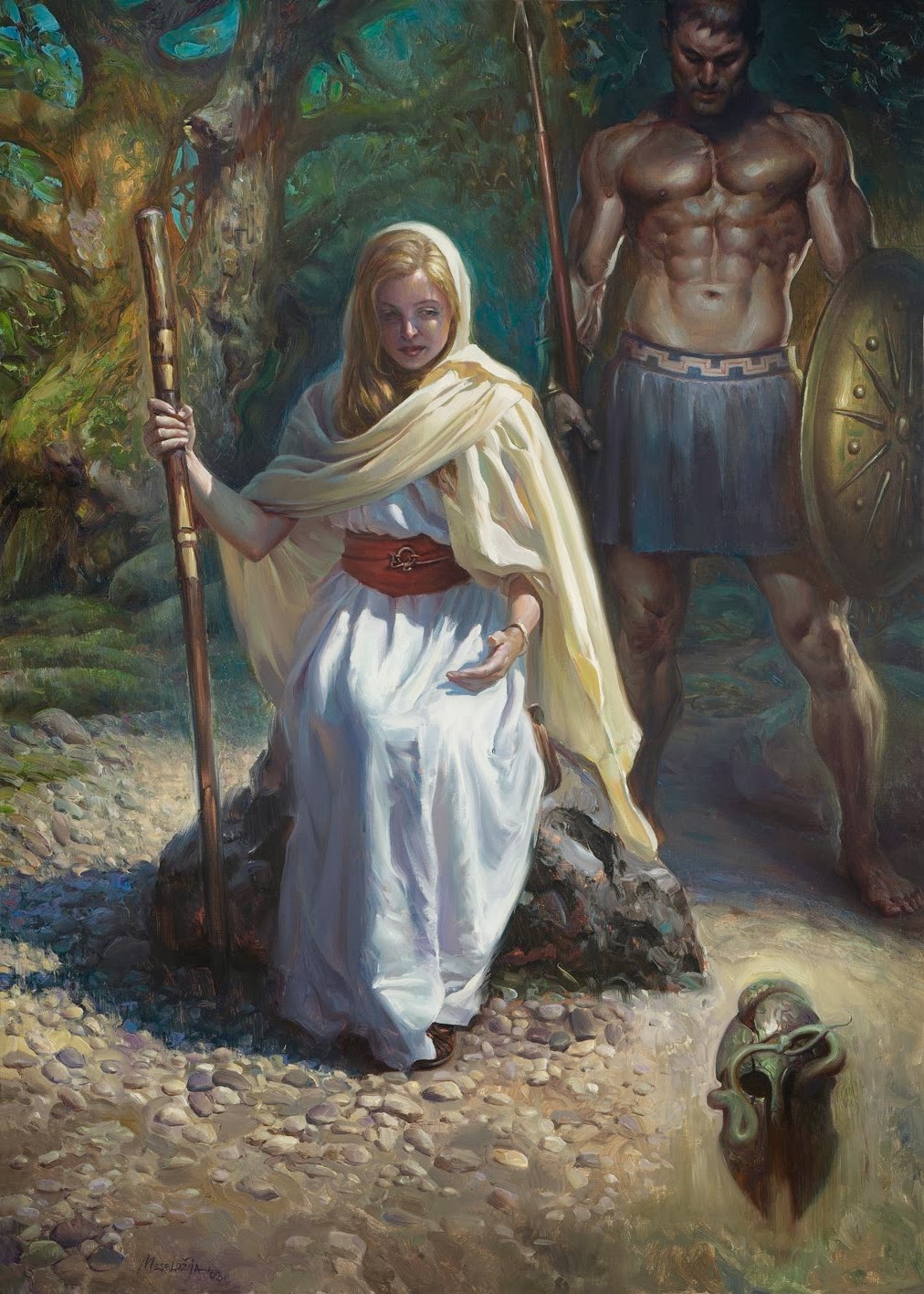 |
|
On the road to Troy,
Helen receives a vision – 50X70 cm, oil on MDF board.
|
A few years ago, a
private collector from Belgium commissioned me to do two paintings. First painting
was to depict Guinevere, King Arthur’s
beautiful but unfaithful wife; the subject of the second painting was Helen
of Troy. The first commission was finished three years ago, the second one a
few months ago.
even romantic, to say that the reason for this delay was my internal struggle
with the painting, because I was not able to find the right model for Helen, for
no woman I knew was beautiful enough to ignite the fire of inspiration and help
me achieve the unachievable: to depict one of the greatest beauties of all
times, a beauty so glorious, a beauty so divine, and so lethal at the same
time, that initiated one of the most famous wars in history, the Trojan War. A war
in which the greatest heroes fought and died, including the greatest of them all,
mighty Achilles. A war that raged for 10 long years, eventually bringing the devastation
to the city of Troy and its inhabitants;
A war that gave birth to the famous Trojan Horse; A war that eventually produced
wondrous wanderings of Odysseus, and
inspired a blind ancient Greek poet, Homer,
to create two of the greatest and most important epic poems of Western
literature, The Iliad and The Odyssey.
Unfortunately, the real
reason for the delay in finishing the second painting was much more trivial;
because of my extremely busy schedule, combined with some health issues, I
could not find time and peace of mind to focus on this commission.
manage to give my full attention to the painting, things got a little tricky.
The main question was – what should I depict, and how? There were so many
possibilities, and so many different ways to do it. At the end, of all the interesting,
dynamic and juicy moments from the story of Helen of Troy, I chose to depict a nonexistent
moment, so to speak. Recognizing this as a conceptual weakness of the
piece, I tried to neutralize it by giving the painting the title “On the road to Troy, Helen receives a
vision”.
By choosing to depict
this uneventful moment, I sacrificed many potentially attractive scenes for the
sake of something more elementary. I tried to bring the composition down to the
story’s very essence: the irresistible attraction between a man and a woman, that
eventually produces a fatal ending. This
is a timeless theme, and while the outer elements change through time, the essential
components stay the same – forbidden love and irresistible passion, betrayal
and subsequent devastation.
used only three elements to point out the essence of my interpretation: a
feminine element, a masculine element, and a vision. Although definitely not
the most beautiful of women, my Helen is dressed in a simple but richly draped
clothes. She is bathing in light.
The masculine element
is reduced to the archetypal symbol of masculinity – a strong, muscular body, a
spear, and a shield; and it is placed in the shadow. There is no glittering armor,
or richly decorated clothes that would suggest this person is Paris, the prince
of Troy.
And the third element
of this composition is a vision of a broken ancient Greek helmet, with a serpent
coming out of it, and biting its own tale. In the image of a serpent biting its
own tail, or so-called the Ouroboros, lies the thought of devouring oneself and
turning oneself into a circulatory process. Ouroboros is a symbol for the
integration and assimilation of the opposites…it represents infinity or
wholeness. Ouroboros slays himself and brings himself to life, fertilizes
himself and gives birth to himself. (C.G. Jung)
I mostly don’t like
to explain my paintings verbally, for I think if the painting is good, it will speak to the spectator in its own
language. But sometimes an indication of the general context is necessary, and
in this particular case I thought a few hints were needed in order to help the
understanding of the piece, and to enhance the experience. My intention was not so much to present a pictorial
story that one needs to read as a book – although I understand that this might
be the first impression – but more to show a few symbols, and through bringing them
into a certain relationship with each other, I hoped to stimulate certain
questions to come to the surface.
Questions like: does Love knows about the morality, or is Love
a phenomenon that transcends all the concepts known to men, and therefore should
stand above all judgment; what is the actual relationship between the sexual
attraction and Love, between the personal benefits and Love; is there something
like unconditional Love; can Love sometimes be considered a sin, or is it
always a virtue; having in mind the terrible consequences of their afire, were Helen
and Paris guilty of selfishness and egoism; or were they just the little
figurines in the game of chess played by
Gods; or do their actions have the power to influence Gods; in other words, do
Gods need man, as much as man need Gods…?
thinking, I don’t believe that my modest pictorial contribution to this
everlasting dilemma has the ability to bring forth some of these fundamental
questions, let alone to give an answer. However, it is true that these thoughts
have played an important role, inevitably influencing the composition and the creation
of this painting.


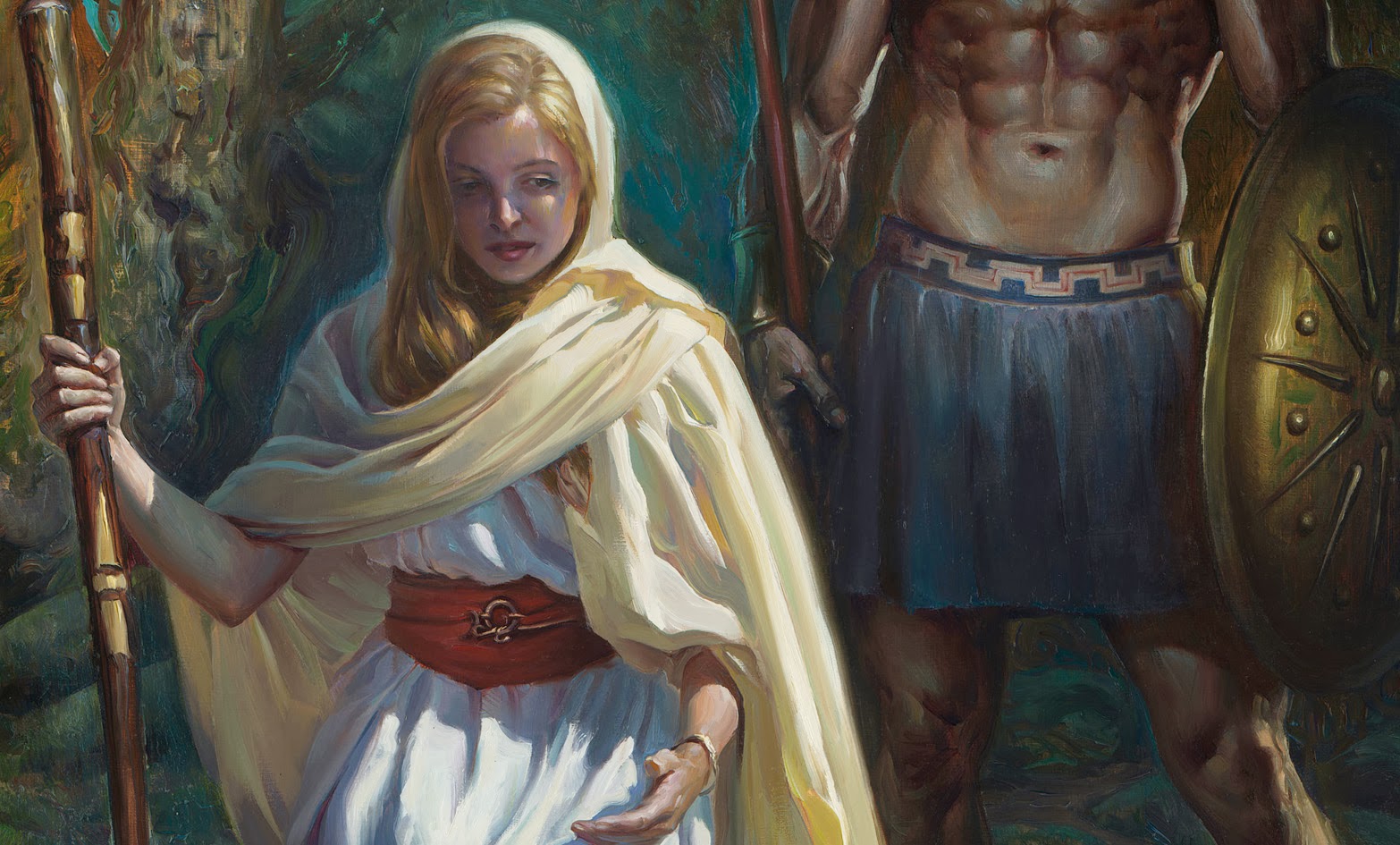
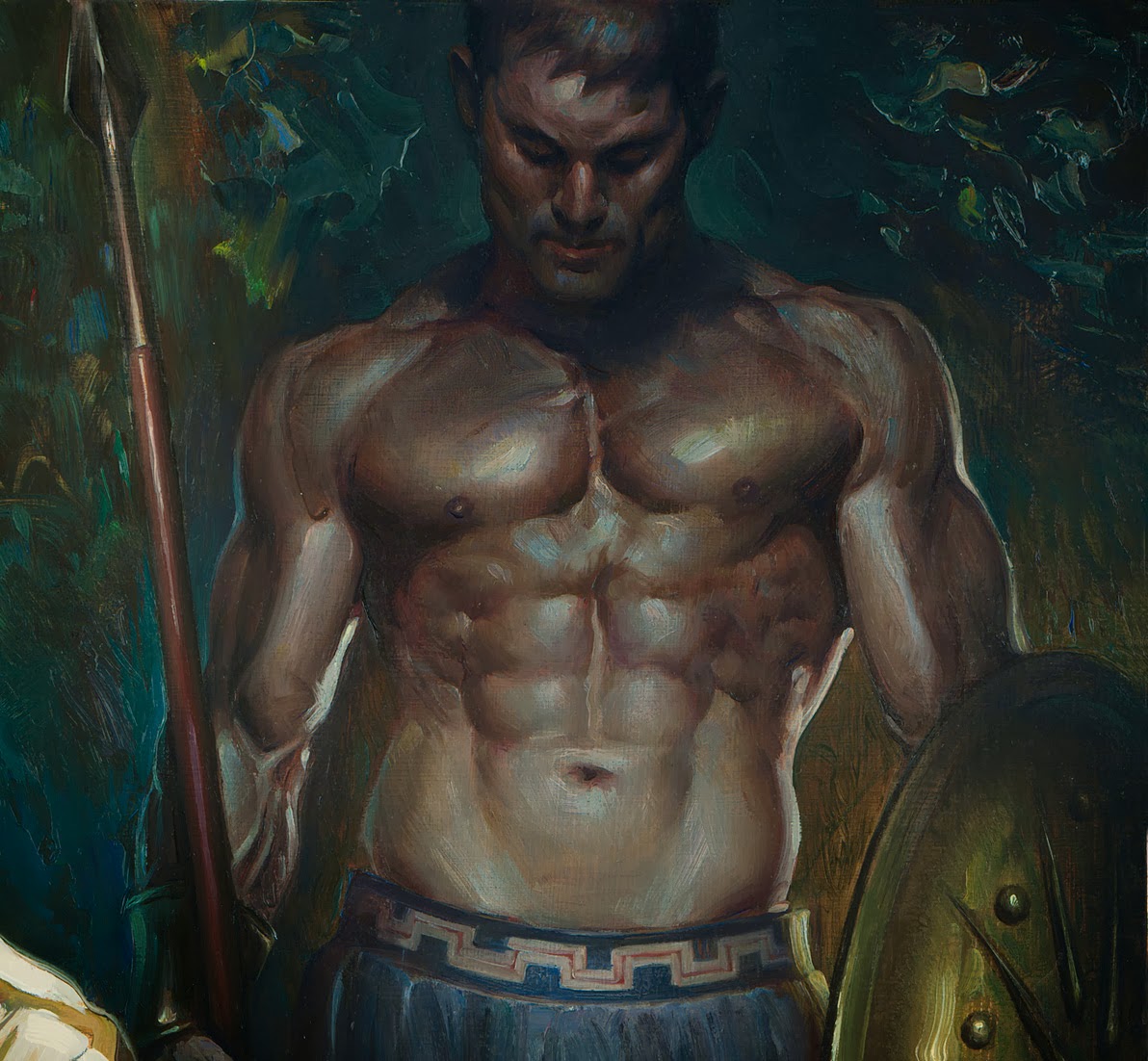

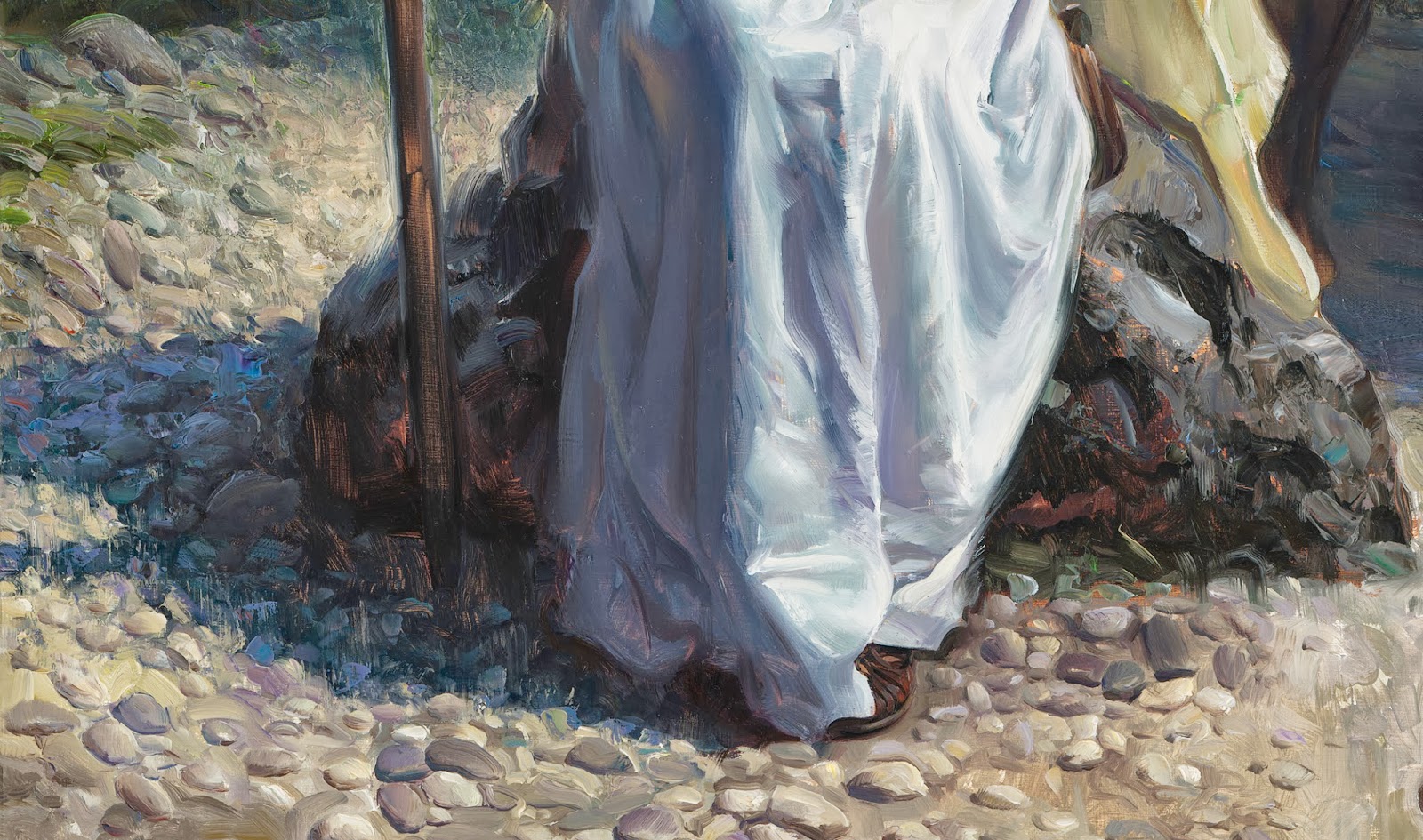
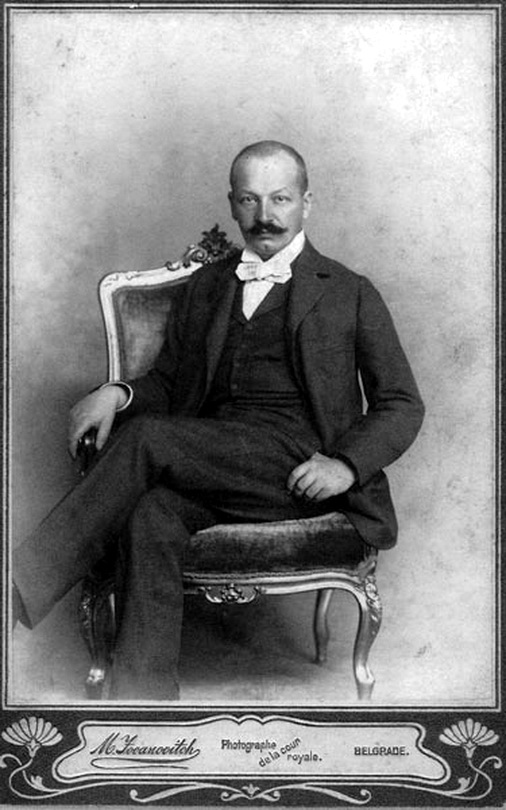
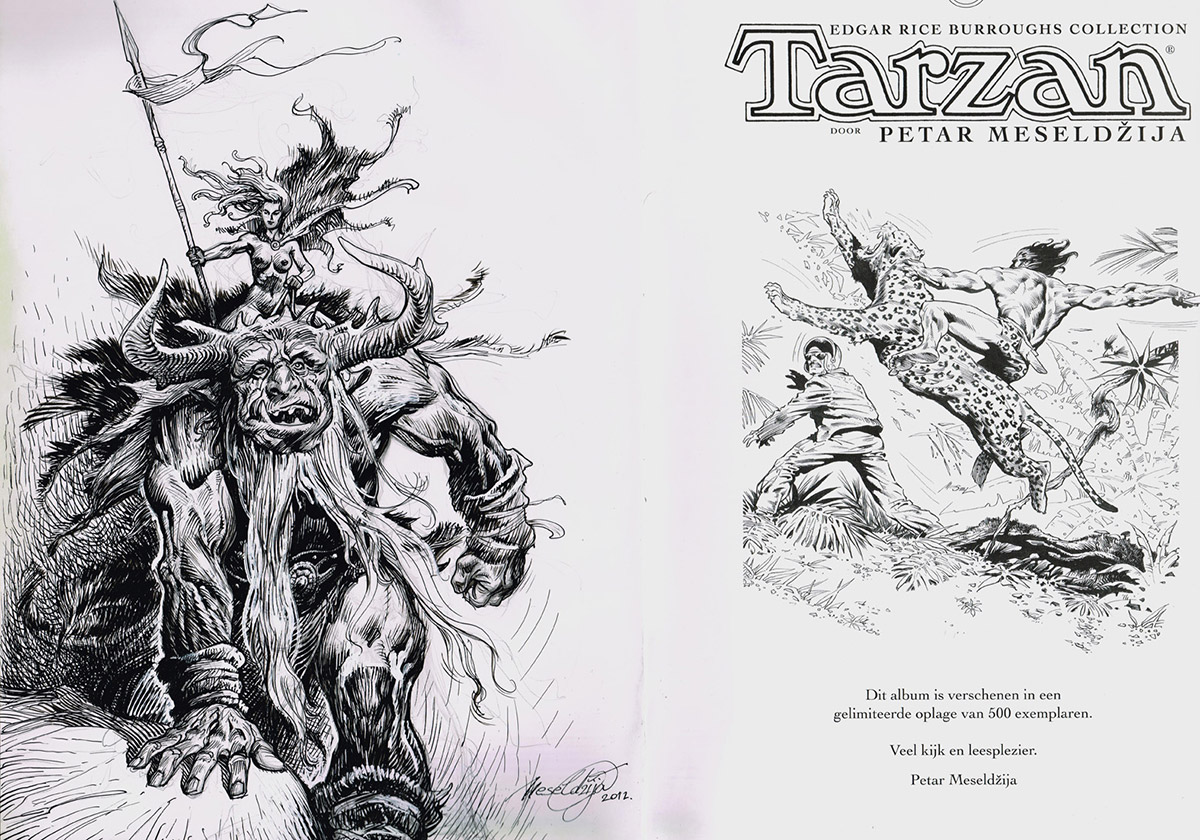
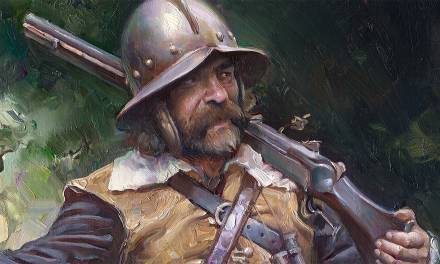
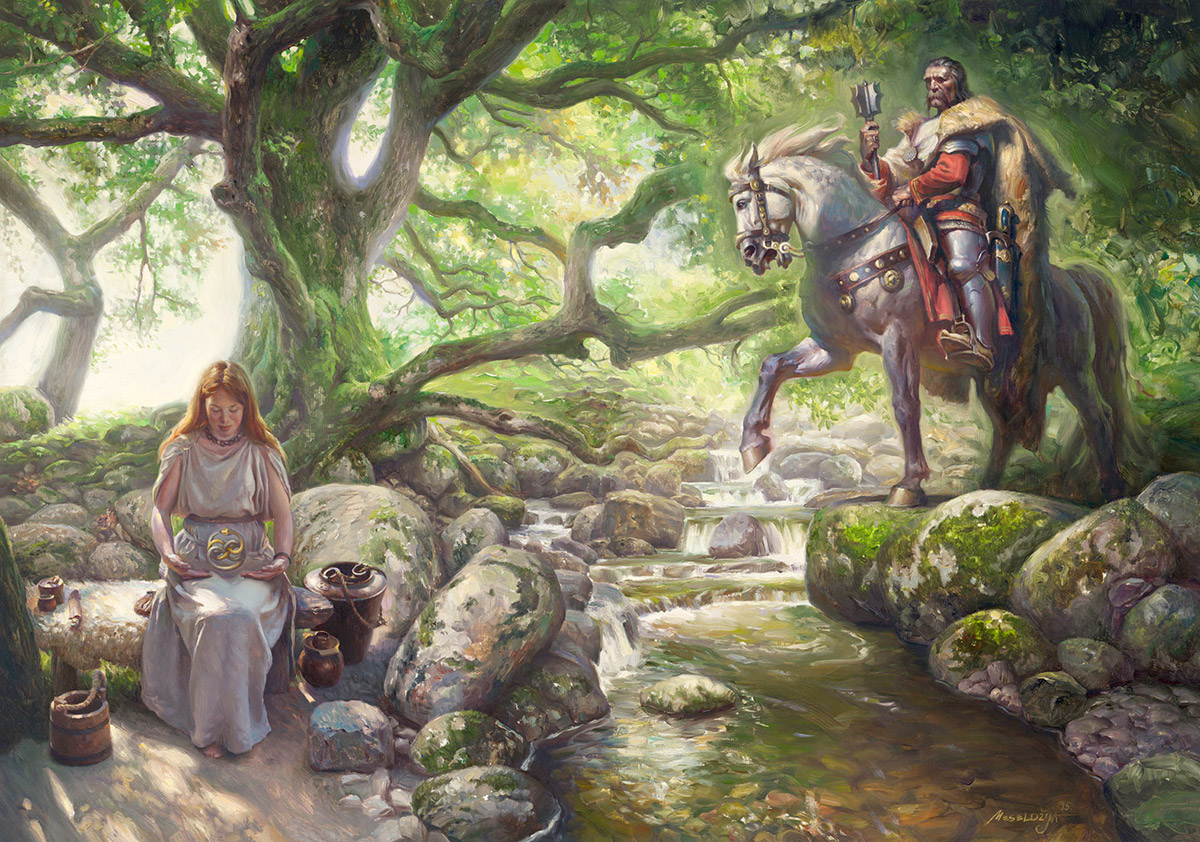

Thank you for this post, Petar.
I really enjoy your work and I thought it was an interesting read.
Fantastic piece Petar! It is great to read how much you thought about the symbolism and story behind the scene, giving this ancient myth new life to today's audience. That might be the most important part of the painting, but I also love the technical side to it, with the bright light on Helen and all the different hues you manage to put into the painting and still keep it all working as one. Thank you for sharing it!
Love those juicy colors and brushstrokes.
Sir, you are a great story-teller and I don't mean this as an insult, as in your painting and your explanation.
Beautiful work Petar!
Thank you, guys!
The colors are very lively and I really dig the symbolism in the painting. Thanks for sharing this Petar.
This is spectacular. Thank you for posting it
To elaborate…. …such attraction has to have a ” I care for nothing else, I must have you ” quality and you brought that out remarkably .They both see the future and both feel it doesn't matter…one see-saws between the desire and the regret…but desire wins. You have here the tension of knowing the consequences and going ahead anyway
Excellent! Thank you, Anne!
It is the best portal to pay bills online within minutes without any complications. It avails maximum possible flexibility to users to complete their tasks in real quick time. Apart from bill payments it also avails most popular and reputed brands products to customers in affordable prices. PayTM came into existence in 2010.
Great write-up, I am a big believer in commenting on blogs to inform the blog writers know that they’ve added something worthwhile to the world wide web!..
Hiya, I’m really glad I’ve found this information. Nowadays bloggers publish only about gossips and net and this is actually frustrating. A good web site with interesting content, that’s what I need. Thanks for keeping this web-site, I will be visiting it. Do you do newsletters? Can’t find it.
Simply respecting your work and thinking about how you dealt with this blog so well. It’s exceptional to the point that I can’t bear to not experience this important data at whatever point I surf the web!
I have added and shared your site to my social media accounts to send people back to your site because I am sure they will find it extremely helpful too.
It was a decent post to be sure. I completely delighted in understanding it in my lunch time. Will definitely come and visit this blog all the more frequently. Much obliged for sharing.
Positive webpage, where did u concoct the data on this posting?I have perused a couple of the articles on your site now, and I truly like your style. Much obliged and please keep up the successful work.
His idyllic existence is one day broken when a team of heavily armed men turn his house into dust in an attempt to kill him, it’s up to him then and a few old friends to try and get to the bottom of the mysterious kill squad.
Many homework on the continual hunt along with offstage on the road to winning. Definitely not attached, simple to-fall as a result of wayside; And not investigation, afterward into a path travel toward the black.
I would like to thank you for the efforts you have made in writing this article. I am hoping the same best work from you in the future as well. In fact your creative writing abilities has inspired me to start my own BlogEngine blog now. Really the blogging is spreading its wings rapidly. Your write up is a fine example of it.
The site is affectionately adjusted and spared as much as date. So it ought to be, a debt of gratitude is in order for imparting this to us.
I as of late saw your site back I are commonly glancing through which consistently. You have a heaps of data at this website so I really like your look to the web a bit as well. Keep up the best show results!
Wow, marvelous blog format! How lengthy have you ever been blogging for? you make blogging look easy. The full look of your web site is excellent, as smartly the content material!
I think this is definitely an amazing project here. So much good will be coming from this project. The ideas and the work behind this will pay off so much.
I’m constantly searching on the internet for posts that will help me. Too much is clearly to learn about this. I believe you created good quality items in Functions also. Keep working, congrats!
A debt of gratitude is in order for posting this information. I simply need to tell you that I simply look at your site and I discover it exceptionally fascinating and educational. I can hardly wait to peruse bunches of your posts.
Personally, I have found that to remain probably the most fascinating topics when it draws a parallel to. You may find two to three new levels inside L . a . Weight loss and any one someone is incredibly important. Initial stage may be real melting away rrn the body. lose weight
This is a great high resolution screen which you have shared for the users. Making a website is not an easy task but managing a good website is really a hard work. As far as this website is concerned, I am very happy.
Find the best bookmakers for Champions League betting. Get top odds, bonuses, and expert reviews to make informed bets on all UEFA Champions League matches.